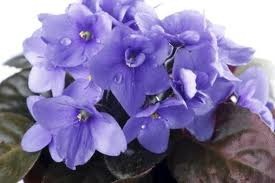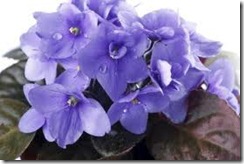The easy-to-grow African violet is a common houseplant with fuzzy leaves and bright blooms. It carries tiny blue, lavender or pink flowers that are consistently produced when the plant is well taken care of. Small ivy plants are a dime a dozen and are grown indoors with reckless ease. Ivies exhibit a trailing habit; they can be variegated or plain with different sized leaves. Neither plant is particularly hard to take care of but each has a particular set of needs. Growing the two types of plants in a communal container could take a bit of effort; you need to watch each one for signs of stress.
- Difficulty:
- Moderate
Instructions
things you’ll need:
- Potting mix
- Peat
- Low planting dish, 3 to 4 inches high
- Violet
- Ivy
- Watering can with a long narrow spout
- African violet food
- All purpose granular time-release food
- Make a mixture of half peat and half potting mix, and fill the planting dish. The peat increases the acid in the soil. African violets need acid soil, and the ivy will be fine in the mixture. Remove the plants from the plastic pots they came in, and gently spread the roots. Scoop out depressions in the soil deep enough to accommodate the roots of each type of plant.
- Place the planting dish in a bright filtered-light window. Both violets and ivy thrive in high light but care must be taken that direct sun rays don’t burn the leaves. The temperature needs to be warm for the violet, at least 70 degrees Fahrenheit. The ivy is not as particular and will do fine in the temperature necessary for the violet.
- Water the plants with room temperature water. The violet should never have water touch the leaves, so use a watering can with a long spout to water under the leaves. The ivy can have water on the leaves but it might splatter, so the best idea is to water under both plants. Both need to be kept in moist soil, so the watering timing will be the same. Stick a finger into the soil at the center of the pot to see if it is moist all the way down. If not, it is time to water.
- Fertilize the African violet twice a year during the growing season. Use a fertilizer made for the plant, and follow the application amount. A water-soluble food that can be watered into the soil is best. Apply the fertilizer to the violet side of the pot only. The ivy needs no special fertilizing except a teaspoon of all-purpose, granular, time-release food worked in around the roots once annually.
- Leach the soil of the pot every month or two. Put the pot in a sink or outdoors, and water it enough that the water pours out of the drainage holes. This removes built-up salts and minerals from fertilization and helps aerate the soil.
- Prune the dead leaves, and pinch off spent flowers in the African violet. The ivy will grow quickly, and it will likely need to be cut to the length you wish. Pinching it off where you see root hairs forming causes the ivy to branch.


Deprecated: strpos(): Passing null to parameter #1 ($haystack) of type string is deprecated in /home/agriviek8Qv/agriviet.net/public_html/wp-includes/comment-template.php on line 2522